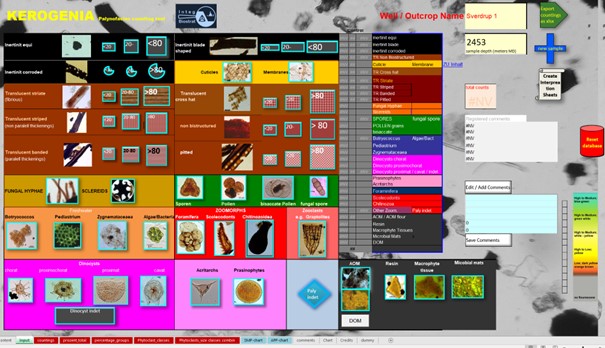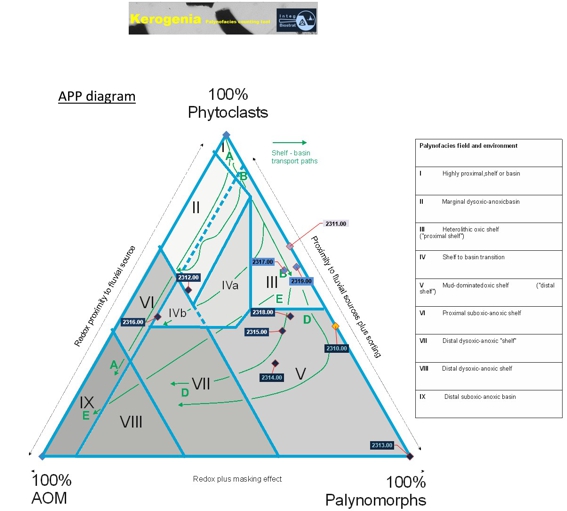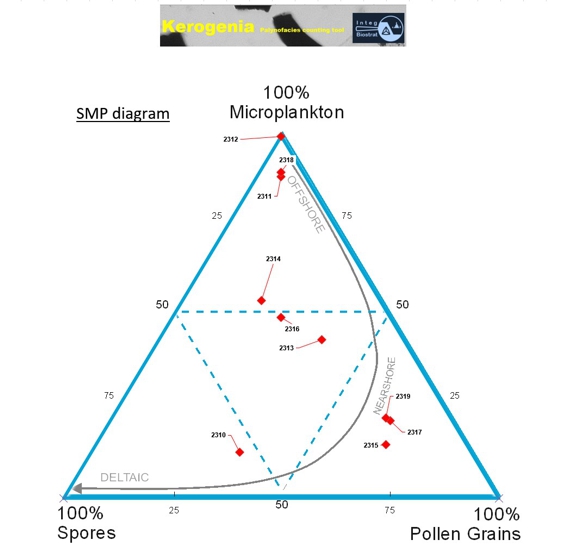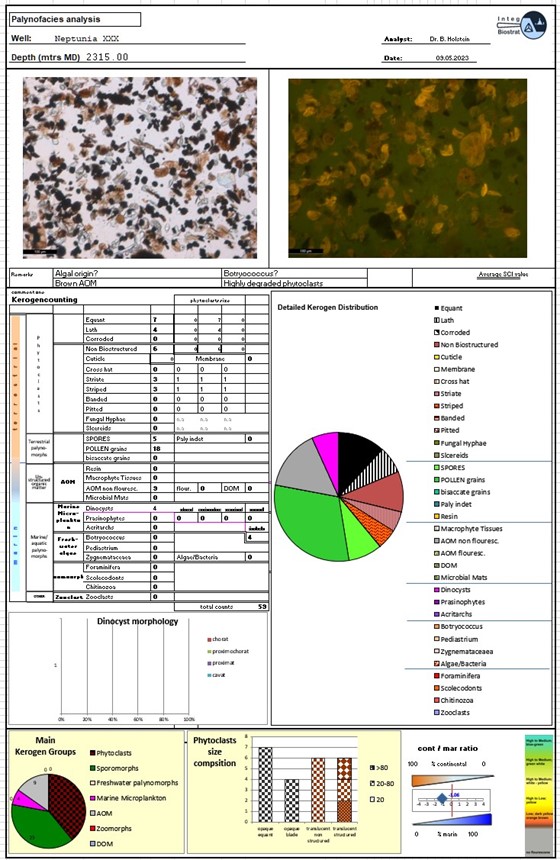New: KEROGENIA Palynofacies / Kerogen counting tool !!

Screenshot shows the KERGOGENIA counting windows with counting click buttons
KEROGENIA is an Excel® based tool for supporting
palynofacies analysis. It avoids time consuming registration of
counting data on paper sheets.
Main Functions
- Adding samples
- Particle counting via special Excel® screen with click buttons
- Adding comments
- Built in graphic presentation (ternary APP & SMP diagrams)
- Creation of interpretation sheets for reports and documentation
Pricing
The introductory price is
59 Euro.
You can download and try KEROGENIA for 30 days. After that period you
will need a license key with costs. The key has a
perpetual validity for the KEROGENIA version you purchased.
Iimprovements and bug-fixes are included.
Start download:

After the download unzip the KEROGNIA folder to a location of your choice.
++ Please refer to the KEROGENIA-documentation&help.pdf document which is located in the KEROGENIA folder ++
Description and information about KEROGENIA
As most palynologists know, palynofacies analysis or kerogen classification is a powerful tool.
In contrast to stratigraphic palynology, which exclusively bases on
palynomorphs (pollen, spores, dinoflagellates and acritarchs),
palynofacies regards the complete organic residue. This covers further
terrestrial components (plant debris, amorphous organic matter) and
other components of marine or aquatic origin (algae, zoomorphs).
Palynofacies analysis enhances interpretation of microfacies and can
lead to a better understanding of the paleoenvironment, or it allows to
evaluate the source rock potential.
Palynofacies counting means, that at least 300 , 500 particles ore more are classified and counted.
The conventional way is manually recording the counts on paper sheets.
This is, at first glance, uncomplicated, but it will need to digitalize
the data set for further interpretation. The digitalization implies
additional time effort.
The second way is to use digital counting. This can be done with
special biostratigraphic software regarding the different kerogen
particles (e.g. dinocysts, sporomorphs or phytoclasts) as species. But
generally, biostratigraphic software is designed for the special needs
of chronostratigraphy and not for palynofacies analysis.
I decided to use Microsoft Excel® for palynofacies counting and
some years ago, I developed a simple counting sheet, basing on the
Visual Basic capability of Excel®. The advantage of Excel® is,
that it is a component of the standard Microsoft Office® package
and wide distributed on PC.
Over time, I improved and extended the functionality of the palynofacies counting sheet.
I added size classes for phytoclasts and developed a code which allows to display ternary
APP (amorphous organic matter – pollen – palynomorphs) and
SMP (spores – microplankton – pollen) diagrams.
All counting data is stored in the format first column sample depth,
successive columns particle designation. This easily allows to use the
data in external software, e.g STRATABugs® or WellCAD®.
Main Functions
- Adding samples
- Particle counting via special Excel® screen with click buttons
- Adding comments
- Built in graphic presentation (ternary APP & SMP diagrams)
- Creation of interpretation sheets
 Ternary APP-diagram created with KEROGENIA
Ternary APP-diagram created with KEROGENIA
 Ternary SMP-diagram created with KEROGENIA
Ternary SMP-diagram created with KEROGENIA
 Palynofacies-interpretation-sheet created with KEROGENIA
Palynofacies-interpretation-sheet created with KEROGENIA
KEROGENIA is designed as Excel® workbook with internal sheets for calculation and displaying diagrams.
Principal software requirements
Microsoft Excel® with enabled VBA functions (if
you want to use the KEROGENIA palynofacies counting tool, your system
administrator must allow to run Excel® workbooks files which
contain macros).
References
MENDONÇA FILHO,
J.G., CARVALHO, M. A., MENEZES, T.R. (2002). Palinofácies. In:
Técnicas e Procedimentos para o Trabalho com Fósseis e
Formas Modernas Comparativas, Dutra, T.L. (Ed.), Unisinos, São
Leopoldo, pp. 20-24.
MENDONÇA FILHO, J.G., CHAGAS, R.B.A., MENEZES, T.R.,
MENDONÇA, J.O., DA SILVA, F.S., SABADINI-SANTOS, E., (2010a):
Organic facies of the Oligocene lacustrine system in the Cenozoic
Taubaté basin, Southern Brazil. International Journal of Coal
Geology, v. 84, 166 - 178.
STEFFEN, D. & GORIN, G. (1993): Palynofacies of the Upper Tithonian
- Berriasian deep-sea carbonates inthe Vocontian Trough (SE France). -
Bull. CentresRech. Explor.-Prod. Elf-Aquitaine, 17: 235-247;Boussens.
TYSON, R.V. (1995): Sedimentary Organic Matter. – Chapman & Hall, 615. p., London

